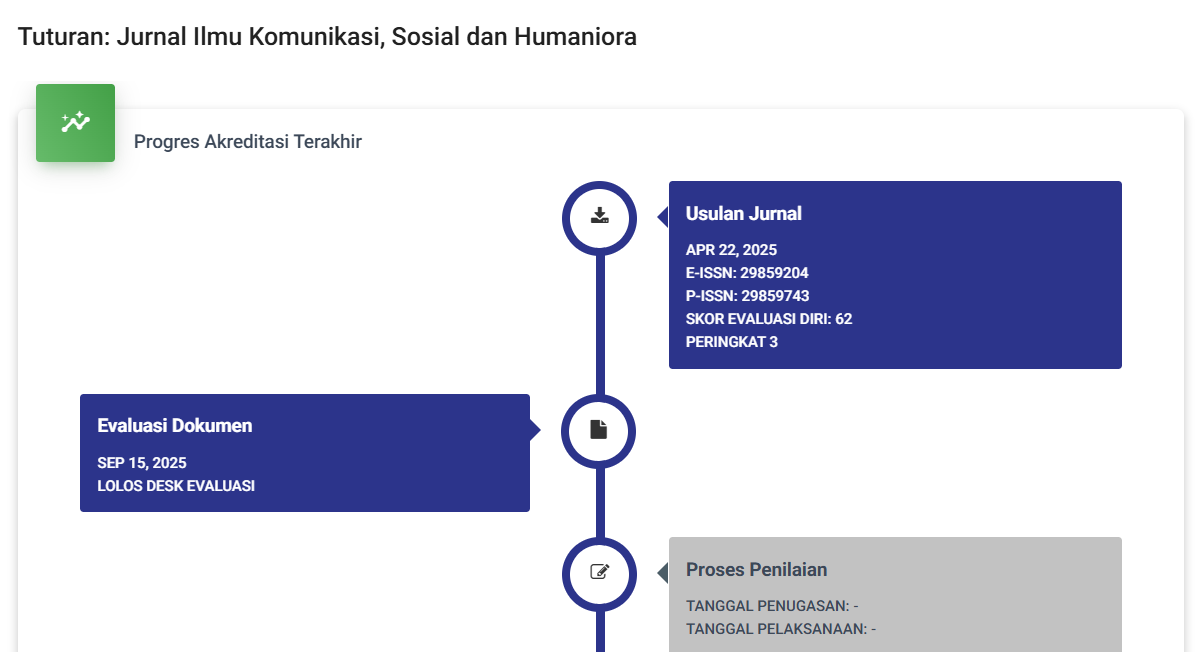Sistem Kontrol yang Terbentuk Pada Tradisi Sarang di Desa Kejawan Kabupaten Bondowoso
DOI:
https://doi.org/10.47861/tuturan.v1i2.219Keywords:
Kejawan Village, Sarang Tradition, Status, Tokang SarangAbstract
Every community has its own uniqueness in forming a tradition. The Sarang Tradition in Kejawan Village refers to the custom that is carried out continuously which then become a tradition that is always done by the local community when they are going to hold an event. The objective of this research is to investigate more deeply about the Sarang Tradition in Kejawan and its impact on the status of Tokang Sarang within the community. By using qualitative research method and conducting observation, interview, as well as using documentation as the data collection methods, it was known that the Sarang ritual in Kejawan has differences compared to rain repelling rituals in other regions. The implementation of Sarang ritual includes the recitation of the holy Quran and Shalawat, and the use of Blackstone (hajar aswad). If there are any mistakes during the process, then, the rain repelling ritual will not work as planned and it will also affect the ability and the community’s perception of Tokang Sarang. Tokang Sarang is required to do some other rituals to maintain their abilities from fading and to make them stronger. They hold power over the area they control and they also have a significant position within the community.
References
Hakim, L., Suhartini, E., & Mulyono, J. (2013). Faktor Sosial Budaya dan Orientasi Masyarakat dalam Berobat.
Prasetyo, H., ROSA, D. V., Jones, E., & Arianis, M. (2020). Sustaining Cultural Legitimation through the Theatrics of Power in the Gong Kyai Pradah Ritual.
Ginting, J. S., & Girsang, D. H. (2023, February). Pawang Hujan: Eksistensi dan Popularitasnya. In Talenta Conference Series: Local Wisdom, Social, and Arts (LWSA) (Vol. 6, No. 2, pp. 38-40). doi: 10.32734/lwsa.v6i2.1732
Hasibuan, I. D. (2021). Makna Simbolik Ritual Pawang Hujan pada Masyarakat Karo (Studi Kasus: Kelurahan Tanjung Langkat, Kecamatan Salapian, Kabupaten Langkat) (Doctoral dissertation, Universitas Sumatera Utara).
Septyana, V. Aksi Pawang Hujan di Gelaran MotoGP Mandalika: Kearifan Lokal yang Mendunia?. Ruang Pariwisata, 19.
Christy, I. Y. (2017). Objek-Objek Dalam Ritual Penangkal Hujan. Sabda: Jurnal Kajian Kebudayaan, 12(1), 70-76. doi: 10.14710/sabda.12.1.70-76
Adha, K., & Tantoro, S. (2018). Kepercayaan Masyarakat Terhadap Ritual Memindahkan Hujan di Desa Tualang Kecamatan Tualang Kabupaten Siak. Jurnal Online Mahasiswa (JOM) Bidang Ilmu Sosial dan Ilmu Politik, 5(2), 1-15.
Arifinsyah, A., Harahap, S. and Yuliani, S., (2020). TRADISI MENGGUNAKAN JASA PAWANG HUJAN DITINJAU DARI AQIDAH ISLAM. Al-Hikmah: Jurnal Theosofi dan Peradaban Islam, 2(2). doi: 10.51900/alhikmah.v2i2.8804
Rizky, C. and Nazaruddin, M., (2022). Persepsi Masyarakat tentang Tolak Hujan pada Acara Pernikahan di Binjai. Jurnal Ilmu Sosial dan Ilmu Politik Malikussaleh (JSPM), 3(1), pp.131-142.
WICAKSONO, A. MAKNA UPACARA RITUAL BAGI MASYARAKAT SEKITAR GUNUNG KELUD.
Khomsiyah, S. TRADISI SELAMETAN SALIN KEMUL DI DESA ROWOTENGAH KECAMATAN SUMBERBARU KABUPATEN JEMBER.
Creswell, J. W. (2015). Penelitian Kualitatif & Desain Research. Yogyakarta: Pustaka Pelajar.








